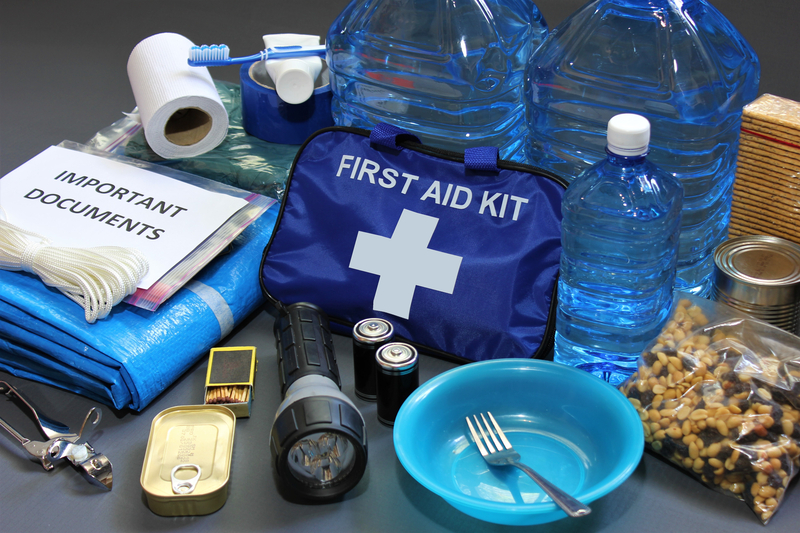In an Emergency, Be Ready to Go or to Stay
September 13, 2021

Emergencies often are unpredictable. But you can still plan for them. If you’ve experienced a catastrophic event—a hurricane, a flash flood, a fire in your home or on your property, or a winter storm that left you without electricity, food, and water—you may live in constant fear that you will relive a dangerous and stressful experience. Or, you can create a “go bag” and a “stay bag” that can help ease your mind in case of an emergency.
Emergency Go Bag
Prepare a portable kit that contains items that you’ll need to survive if you suddenly have to leave your home. Your emergency go bag should contain the following items:
- Personal identification
- Recent family photos for identification, including pictures of your pets
- Copies of important information, including contact numbers, passports, bank and credit card account numbers, medical records, and insurance information sealed in a waterproof container
- Bottled water and food, including high-energy snacks, in easy-to open containers, utensils, and bowls
- Prescription medications and a list of your prescriptions
- Small first-aid kit, including ice packs, bandages, hand sanitizer, gloves, ointment, pain relievers, stomach remedies, cough and cold medicines, and fluids with electrolytes
- Blanket/throw
- Sturdy shoes or boots and socks
- Warm clothes, rain gear, and hats
- Extra pair of glasses, contact lenses and supplies, dentures, and hearing aids/batteries
- Personal hygiene items, including face masks, soap, wipes, toilet paper, feminine hygiene products, toothbrush, toothpaste, paper towels, and household chlorine bleach
- Items such as canes, walkers, diapers, and formula for family members–children, seniors, and people with disabilities—with special needs
- Essential items for pet care: water, bowls, food, updated medical records, leashes, collar ID tags, crates, plastic bags, and carriers
- Flashlight and LED headlamp
- Candles
- Waterproof matches and lighter
- Battery operated/manual radio
- Extra batteries (sizes AA, AAA, C, and D)
- Pocketknife
- Whistle and pepper spray
- Extra house and car keys
- Solar and electric chargers for phones and other electronics
- Plastic garbage bags and toolkit
- Paper, pens, and tape for leaving messages
- Family communication plan that includes emergency phone numbers
- Regional road map if you need to travel
- Small amounts of cash–such as coins, one, and five dollar bills in case you can’t use your credit/debit cards
- Toys and games for kids
You also should consider to:
- Prepare an emergency go bag for each member of your household
- Store your emergency go bag in a place that is easy to get to, such as under a bed, in a closet, next to a door, in the garage, or in the trunk of your car
- Prepare emergency go bags for year-round use: spring, summer, fall, and winter
- Update your emergency go bag every six months
- Replace items that will expire in the upcoming months such as food and medical supplies
- Equip a vehicle bag with the following items:
- Jumper cables, flashlight, and extra batteries
- First aid kit
- Red bandana or help signal
- Packaged food, water, and a refillable water bottle for each person
- Sand or cat litter and a small shovel
- Gloves, hat, boots, jacket, blankets or sleeping bags, and rain gear
Although your emergency go bag will include a number of items, make sure your bag is sturdy and easy to carry.
Emergency Stay Bag
An emergency stay bag should contain a two-week supply of essentials in the event you have to hunker down at home without power, water, or heat. If you’ve prepared your emergency go bag, you can use many of its contents if you need to stay at home and wait for inclement weather or other adverse conditions to improve.
You’ll need greater quantities of supplies for your emergency stay bag and may want to add:
- Firewood if you’ll be relying on your fireplace for heat
- Extra blankets
- Duct tape
- Multipurpose tool
- Trash bags for sanitation
- Fire extinguisher
After you’ve collected extra items for your emergency stay bag, put them in one place—like a large plastic bin or two—so they don’t get used and will be at the ready if an emergency situation strikes.
InsureYouKnow.org
With the right gear in your emergency go and stay bags, you can be prepared to face unpredictable circumstances that force you to deal with whatever comes your way. In addition to keeping copies of important records safely in waterproof containers as recommended, you also should file important information, including contact numbers, passports, bank and credit card account numbers, medical records, insurance information, and a list of your prescriptions electronically at insureyouknow.org.
